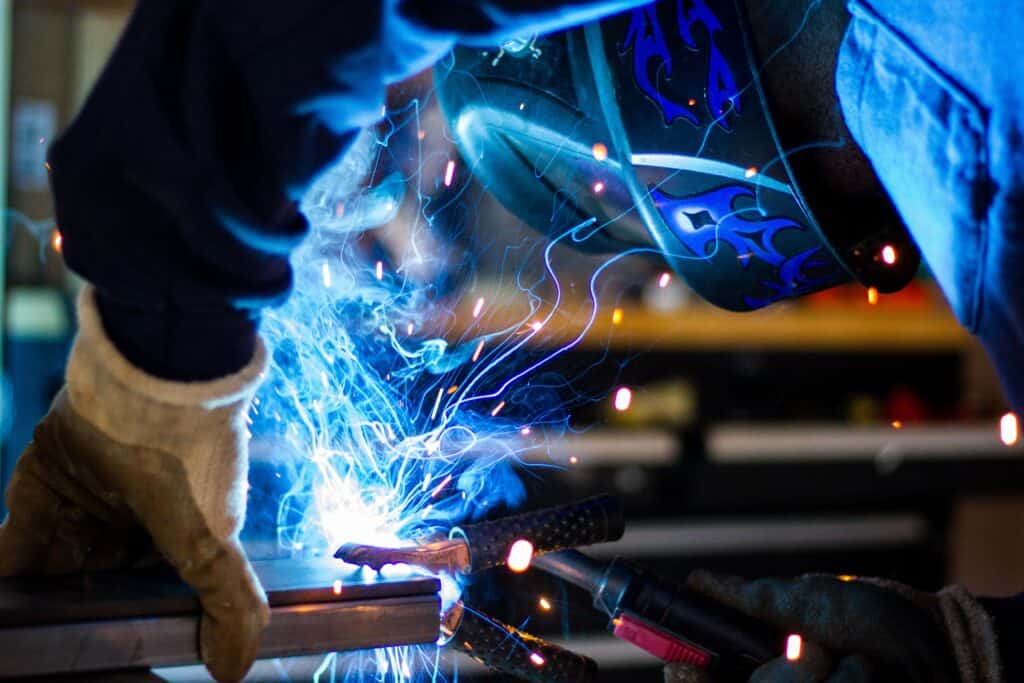Opening remarks
Imperial College London
The White City Campus at Imperial College London is an example of a hub for research and innovation that provides a network of research and innovation spaces with access to R&I infrastructure for businesses. Access to cutting edge expertise and technology helps to facilitate partnerships and collaboration between researchers, students and businesses of all sizes. It provides an entrepreneurial ecosystem that aims to support the full research translation pathway, from ideation, business development and prototyping, through to early-stage commercialisation and spinout. The Campus offers rapid prototyping environments for testing new ideas and product development and in parallel dedicated time for equipment, facilities and expertise is made available to businesses at scale, as well as networking programmes for small and medium enterprises (SMEs) and academics. Due to the success of the model, there has been huge demand from businesses to access the Campus infrastructure, and Imperial continues to explore new ways to expand our offer.
LifeArc
LifeArc is an organisation focused on early-stage health translation, and its work – especially with partners – spreads across the UK. There is great research happening in the UK, but especially in health translation it does not always have access to the right assets, platforms, knowledge or funding to get out of the lab and into the real-world.
Infrastructure can help to attract and develop skills. For example, the Francis Crick Institute has been able to attract talent through providing world-class scientific platforms. As another example, the network of Innovation Hubs for Gene Therapy, co-funded by LifeArc, the MRC and the BBSRC, have a strong focus on training and building skills. The Hubs primarily have a role supporting academics and that pipeline in turn feeds into industry, but they are also a resource that industry can access.
Many universities and places do not necessarily have the capacity and resources to build an innovation ecosystem with world-class infrastructure. The provision of shared infrastructure, such as the Innovation Hubs for Gene Therapy, provides training opportunities for places that do not have such developed ecosystems and may not benefit from world-class infrastructure.
It is important to recognise the importance of ‘soft’ infrastructure. A key role for LifeArc is building networks, collaborations and improved ways of working.
Benefits of R&I Infrastructure

Main benefits
Participants discussed how R&I infrastructure supports business to scale and grow. R&I infrastructure provides access to talent, supports collaboration between universities and businesses and can support R&I across the UK.
Access to skills and talent:
R&I infrastructure attracts and provides access to talent.
Support R&I across the UK:
Hub-and-spoke models can support research locally and nationally.
Support the translation pathway:
Innovation clusters provide support at different stages of the translational pathway.
Provide access to skills and talent: R&I infrastructure attracts and provides access to talent. R&I infrastructure – for example, science parks as well as innovation clusters and districts – can provide businesses with access to talent. This can be a big draw for businesses, especially if they are regionally located. The White City Campus at Imperial was cited as an example of R&I infrastructure that has been able to attract talent. The Campus has attracted students who want to work with industry, leading to increased student numbers on site. The Campus and wider White City District also provides access to state-of-the-art laboratory space at different price points that allows customers, including businesses, to access talent.
Support R&I across the UK: Hub-and-spoke models can support research locally and nationally. By adopting a ‘hub and spoke model’, infrastructure can reach places across the UK and support a larger community for research. The Royce Institute at the White City Campus was given as an example of an equipment sharing facility that is used both locally and nationally. There is evidence that the facility has been a success so far, and it is scaling up with dedicated support.
Support the development pathway: Innovation clusters provide support at different stages of the development pathway. R&I infrastructure, including innovation clusters, can provide critical support for businesses at different stages of the translational pathway to support them to scale up and grow. For example, the White City Campus at Imperial has a pipeline of infrastructure that provides multiple entry points for businesses. This includes support for ideation and prototyping to early-stage commercialisation and spinout and access to capital equipment that is prohibitively expense for SMEs to purchase. By providing shared access to infrastructure the Campus aims to facilitate collaboration between businesses and the university, enabling greater innovation, and creating the conditions for businesses to grow and scale.
Challenges around supporting businesses through R&I infrastructure

Main challenges
Participants discussed some of the main challenges around supporting businesses through R&I infrastructure. A central theme was lack of connectivity that prevents access to key infrastructure, and cultural barriers among organisations to collaborate with businesses.
Cultural barriers:
Differences in cultural mindset can prevent cross-sector collaboration and access to infrastructure.
Wider enabling infrastructure:
There is a lack of access to wider enabling infrastructure to support innovation clusters.
Financial barriers:
There is a tension between short-term versus longer-term financial impact.
Cultural barriers: Differences in cultural mindset can prevent cross-sector collaboration and access to infrastructure. Differences in cultural mindset between different sectors (e.g. universities and businesses) can prevent businesses accessing the right infrastructure. Participants suggested that businesses, including SMEs, are not always able to access the right infrastructure due to resistance by universities or other organisations. Often, the inclusion of businesses as collaboration partners on bids is seen to be more of a ‘box ticking’ exercise, leading to the question of who R&I infrastructure is for. It is therefore important to support longer-term cultural change amongst different organisations, including universities, to be open to and support business collaboration. A key part of this is recognising and rewarding bottom-up SME and industry engagement by universities as this is pivotal to providing the bandwidth required.
Wider enabling infrastructure: There is a lack of access to wider enabling infrastructure to support innovation clusters. Lack of access to enabling infrastructure can create barriers to accessing R&I infrastructure, including innovation clusters, across the UK. This includes lack of access to affordable housing, lack of transport links, and water and power supply issues stalling planning applications. There are real estate challenges that mean it is not possible to deliver enough affordable housing for talent in a region. For example, planning applications and processes are often stalled because of water and power issues. This means that it can be difficult for businesses to access the right talent. In addition, lack of connectivity was cited as barrier to accessing R&I infrastructure across the UK. This included in particular the lack of transport links (e.g. railway). Several examples were given of remote R&I infrastructure locations that suffer from lack of transport links. For example, Adastral Park, a cluster of high-tech telecommunication and technology companies based in Ipswich, is hard to access as it lacks a railway station. Most employees who work there are based locally and employed by the anchor institution BT.
Financial barriers: There is a tension between short-term versus longer-term financial impact. There is a strong financial barrier to building R&I infrastructure projects due to perceived lack of financial return on investment. There needs to be clearer evidence of how R&I infrastructure supports the wider economy and provides financial impact. The White City Campus was given as an example of an initiative that generates financial impact in the short-term and over the longer-term, through providing a range of incentives for Imperial and for the businesses that access the site, including paid equipment access, talent pipelines, SME co-location and associated revenues, publications, joint research funding, intellectual property and formation of relationships.
Discussion of possible policy solutions

Summary of possible policy solutions
Participants discussed possible policy solutions to support businesses through R&I infrastructure. This included a discussion of ingredients that can support the formation of innovation clusters, and the role of Government in enabling this. A central theme was that success is often the result of several ingredients that come together to create a receptive environment combined with the right cultural mindset.
Raise awareness of ‘what works’:
Increase awareness and exchange good practice regarding successful innovation clusters.
Enable soft networks:
Enable the formation of ‘soft networks’ to support funding of critical R&I infrastructure.
Speed up the planning process:
Reduce bureaucracy and establish supportive regulation around the planning process.
Increase the flexibility of funding:
Increase lead-in time and flexibility of Government funding.
Facilitate national/local Government coordination:
Facilitate partnerships with receptive local authorities.
Raise awareness of ‘what works’: Increase awareness and exchange good practice regarding successful innovation clusters. It would be helpful to increase awareness about examples of successful innovation clusters. For example, the White City campus conducts site visits to share good practice and increase awareness about the campus model. This could help to support establishing new R&I infrastructure projects across the country. However, it would be helpful to support information sharing on a greater scale. The EPSRC’s funding call for an equality, diversity and inclusion (EDI) sharing hub was given as an example, this initiative aims to support the sharing of good practice and ‘what works’ across the engineering, physical and mathematical sciences research community.
Enable soft networks: Enable the formation of ‘soft networks’ to support funding of critical R&I infrastructure. Government can support the formation of soft networks that in turn can support critical areas of R&I. Attendees highlighted that while many areas of R&I do not necessarily provide short-term gains for businesses, in the long-term they generate impact for the economy. For these areas, early-stage support from donors and investors can be vital. A ‘soft network’, e.g. made up of alumni, can help with the funding of R&I infrastructure, in particular aspects that are not monetisable from the beginning. The presence of soft networks was cited as one of the drivers of the success of the Boston cluster in the US. TenU was cited as an example of a soft network that aims to support research commercialisation. It is an international collaboration between technology transfer offices across nine universities that aims to share effective practices in research commercialisation. Similarly, another example is the digital platform Konfer, a partnership between NCUB, Research England and UKRI. It is an online innovation tool and database that helps to connect businesses and universities to access knowledge, projects and experts.
Speed up the planning process: Reduce bureaucracy and establish supportive regulation around the planning process. There is a role for the Government to make it easier for R&I infrastructure to be built across the UK. This includes speeding up the infrastructure planning process by reducing bureaucracy and ensuring supportive regulation. Planning applications and processes are often stalled because of water and power issues. Regionally, there are layers of Government that can prevent planning authorities from conducting projects. Attendees suggested that planning reforms, including simplifying and enabling regional planning authorities, could better support the delivery of R&I infrastructure projects.
Increase the flexibility of funding: Increase lead-in time and flexibility of Government funding. Participants suggested that the process around applications for Government funding for infrastructure projects is suboptimal due to the short timeframes associated with bidding for and spending the money. It was suggested it would be helpful to have more lead in time, as well as greater flexibility and specificity on the right types of projects for Government funding pots. This would avoid local authorities spending large amounts of time filling in long forms, leading to fewer but better quality applications.
Facilitate national/local Government coordination: Facilitate partnerships with receptive local authorities. Part of the success in establishing the White City Campus at Imperial was the presence of a supportive and receptive local authority. The local council had an industrial strategy at the local level that supported long-term and forward thinking, including around R&I. This topic of national/local Government coordination deserves further attention.




